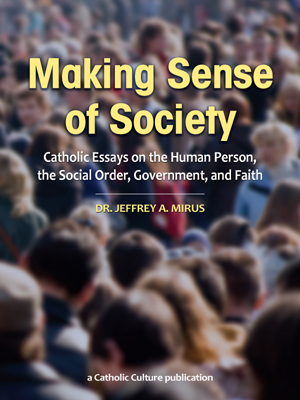Shrines in the Walls
by Zsolt Aradi
One might expect that the population of Rome would have many favorite protectors to be venerated among the innumerable martyrs and saints who lived and died in the Eternal City. Certainly the Roman is fully aware of the greatness of his city and its history and he pays full respect to these heroes of Christianity. Nevertheless, no other city in the world venerates the Blessed Virgin more and with greater tenderness than Rome. True, many of the churches were not built by the population of Rome; those are gifts of Popes and grateful nations, but it is the people of Rome whose prayers fill these churches, it is the people of Rome whose spirit kept the faith alive in the Eternal City and in the churches. Not one church in Rome can be considered as a mere monument of art only; they are all places of the living faith. And no other city in the world has as many churches dedicated to Mary as Rome: Santa Maria Maggiore, Santa Maria Ara Coeli, Santa Maria Trastevere, Santa Maria degli Angeli, dell Anima, in Cosmedin, del Sole, dell Umilta just to mention a few of the more than sixty churches and chapels built in her honor.
The Roman expresses his love for his Beloved Lady in many other different forms. One can safely state that there is no building, ancient or recent, without a little shrine, a small image or statue of the Madonna built somewhere in its walls. Sometimes the image is placed above the entrance or built into the outer walls; often it is in the cellar. An eternal flame or a small electric lamp is set before the shrine. People stop before entering, or glance up at her with an inner prayer. Throughout the year loving hands provide flowers to adorn these private shrines. Like the bell towers and cupolas of the Basilicas and the ruins of the great Roman buildings, these colorful little images are an adornment to the center of Christianity. The great Marian holy days are feted with profound piety and at the same time with an outburst of joy, which recalls the accumulated lore of Rome's history. These little shrines in the walls are daily reminders of the mutual love of the Romans for Mary and her love for the city, which suffered and fought for her. During the barbaric invasions the Romans invoked her protection. When everything seemed lost the family retired into the home and prayed before the candle-lit image of the Madonna. During the tensionful months and years of World War II, the people of Rome prayed not only for the salvation of their own city, but for all cities where the tension became tragedy, for the bombed and shattered civilian populations of all lands. These shrines in the walls of the buildings of Rome, the smaller and the special monuments to Mary--like the column erected to commemorate the Immaculate Conception are not only expressions of tenderness, but also mirror the soul of a wise and humane people for whom God is the Father of all nations, and Mary, Mother of all people. The Roman who prayed before his house shrine knew that he had to implore mercy for all people, because only if all were spared and aided could he achieve happiness together with the rest of the world.
This item 3024 digitally provided courtesy of CatholicCulture.org







